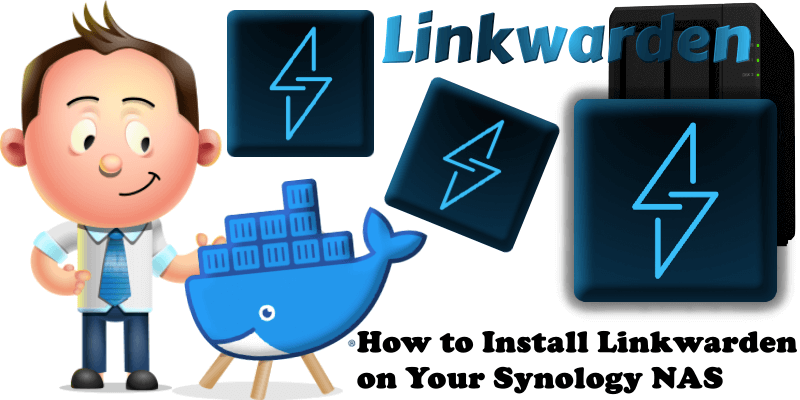
Linkwarden is a self-hosted, open-source collaborative bookmark manager to collect, organize and archive webpages. The objective is to organize useful webpages and articles you find across the web in one place, and since useful webpages can go away, Linkwarden also saves a copy of each webpage as a Screenshot and PDF, ensuring accessibility even if the original content is no longer available. Additionally, Linkwarden is designed with collaboration in mind, sharing links with the public and/or allowing multiple users to work together seamlessly. In this step by step guide I will show you how to install Linkwarden on your Synology NAS using Docker & Portainer.
STEP 1
Please Support My work by Making a Donation.
STEP 2
Install Portainer using my step by step guide. If you already have Portainer installed on your Synology NAS, skip this STEP. Attention: Make sure you have installed the latest Portainer version.
STEP 3
Make sure you have a synology.me Wildcard Certificate. Follow my guide to get a Wildcard Certificate. If you already have a synology.me Wildcard certificate, skip this STEP.
STEP 4
Go to Control Panel / Login Portal / Advanced Tab / click Reverse Proxy. Follow the instructions in the image below.
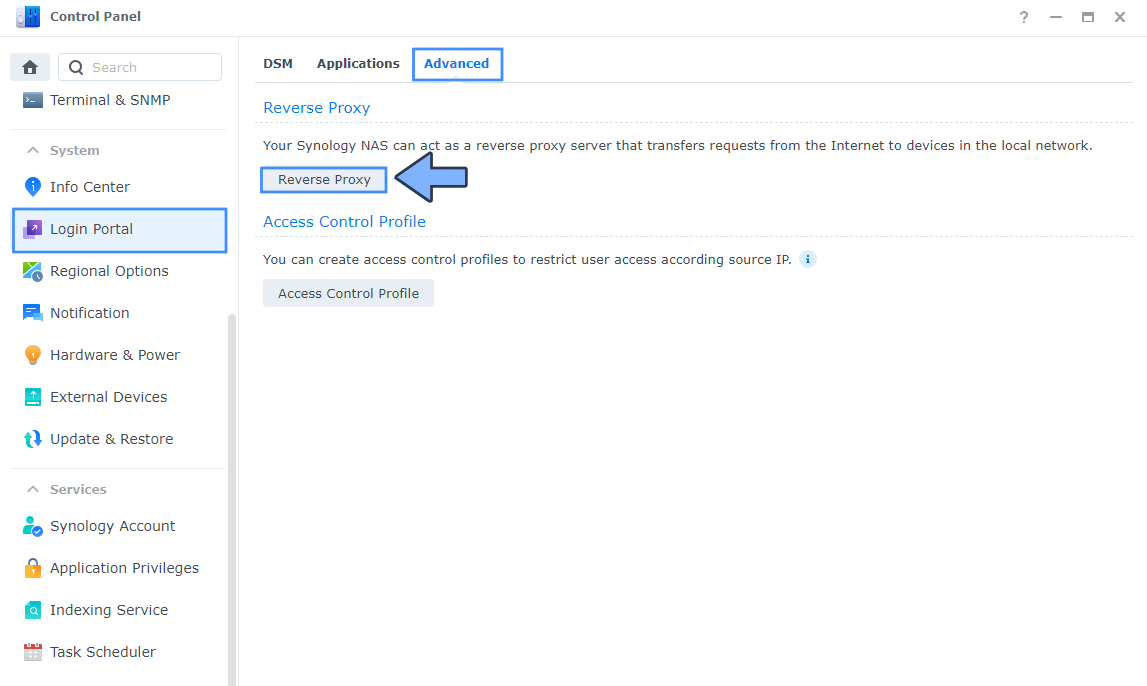
STEP 5
Now click the “Create” button. Follow the instructions in the image below.
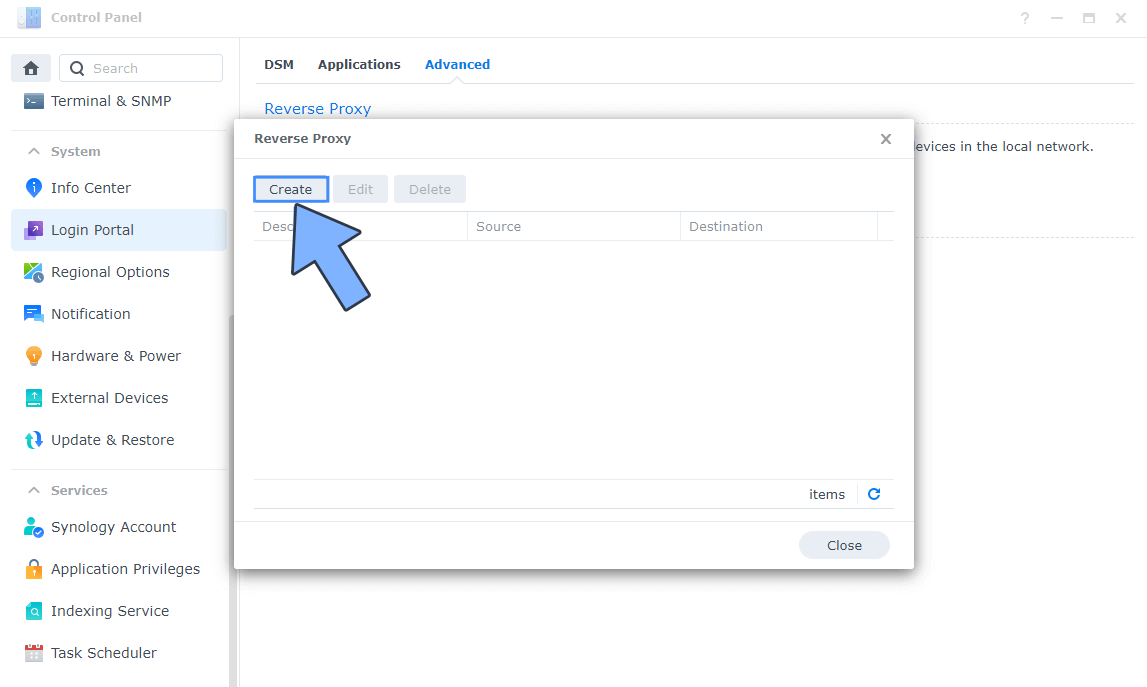
STEP 6
After you click the Create button, the window below will open. Follow the instructions in the image below.
On the General area, set the Reverse Proxy Name description: type in Linkwarden. After that, add the following instructions:
Source:
Protocol: HTTPS
Hostname: linkwarden.yourname.synology.me
Port: 443
Check Enable HSTS
Destination:
Protocol: HTTP
Hostname: localhost
Port: 7461
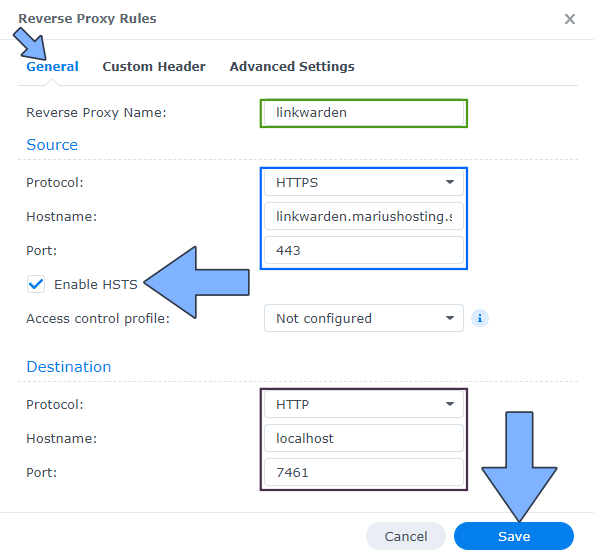
STEP 7
On the Reverse Proxy Rules click the Custom Header tab. Click Create and then, from the drop-down menu, click WebSocket. After you click on WebSocket, two Header Names and two Values will be automatically added. Click Save. Follow the instructions in the image below.

STEP 8
Go to Control Panel / Network / Connectivity tab/ Check Enable HTTP/2 then click Apply. Follow the instructions in the image below.
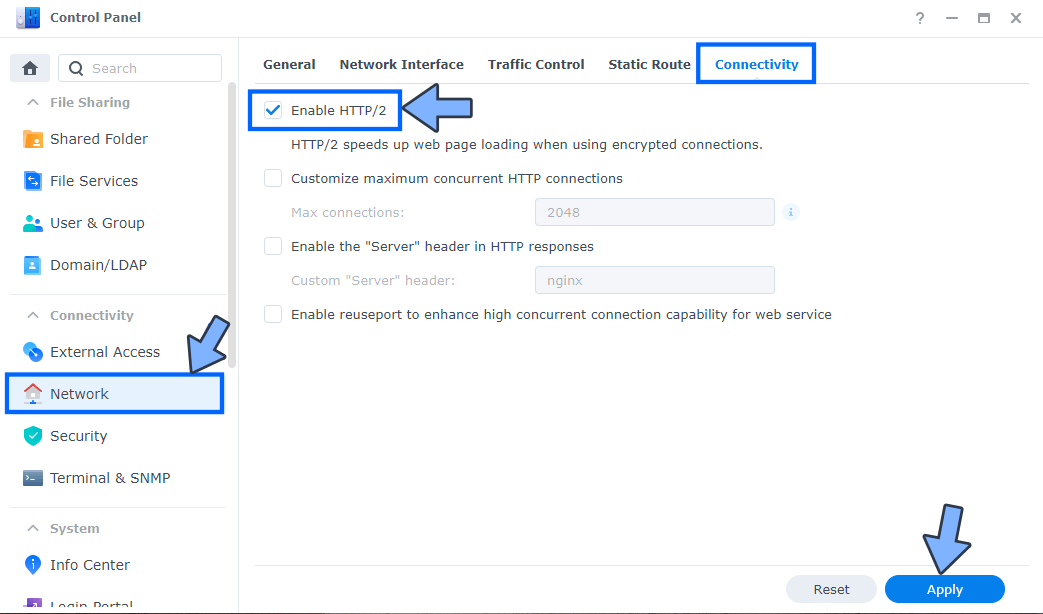
STEP 9
Go to Control Panel / Security / Advanced tab/ Check Enable HTTP Compression then click Apply. Follow the instructions in the image below.
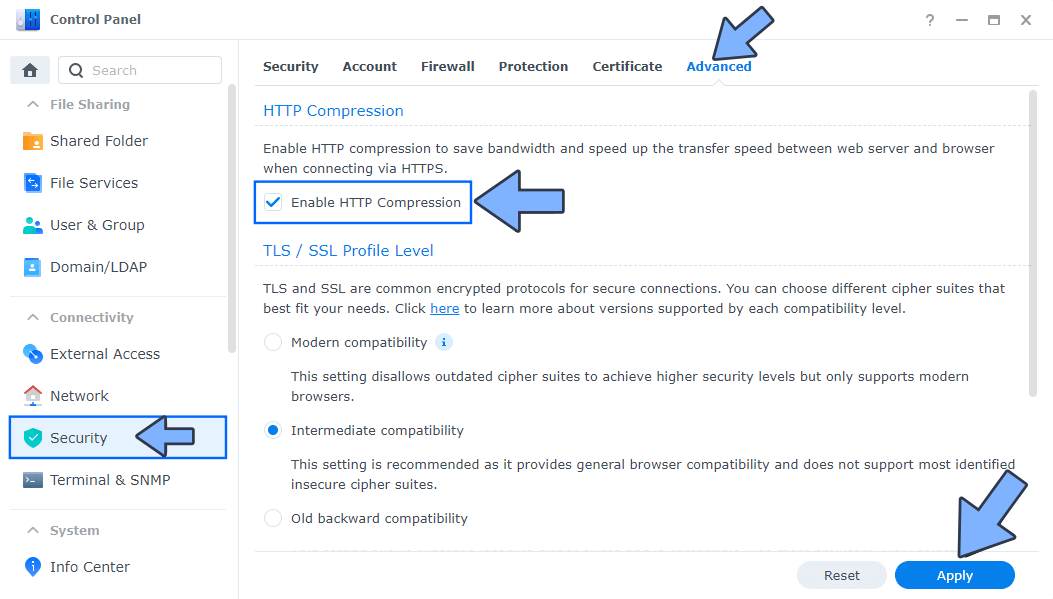
STEP 10
Go to File Station and open the docker folder. Inside the docker folder, create one new folder and name it linkwarden. Follow the instructions in the image below.
Note: Be careful to enter only lowercase, not uppercase letters.
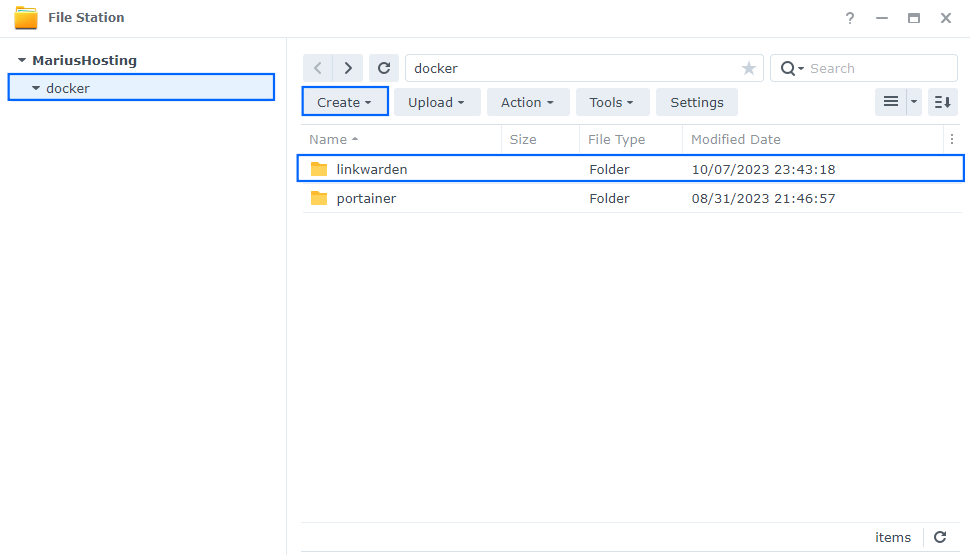
STEP 11
Now create two new folders inside the linkwarden folder that you created at STEP 10 and name them data and db. Follow the instructions in the image below.
Note: Be careful to enter only lowercase, not uppercase letters.
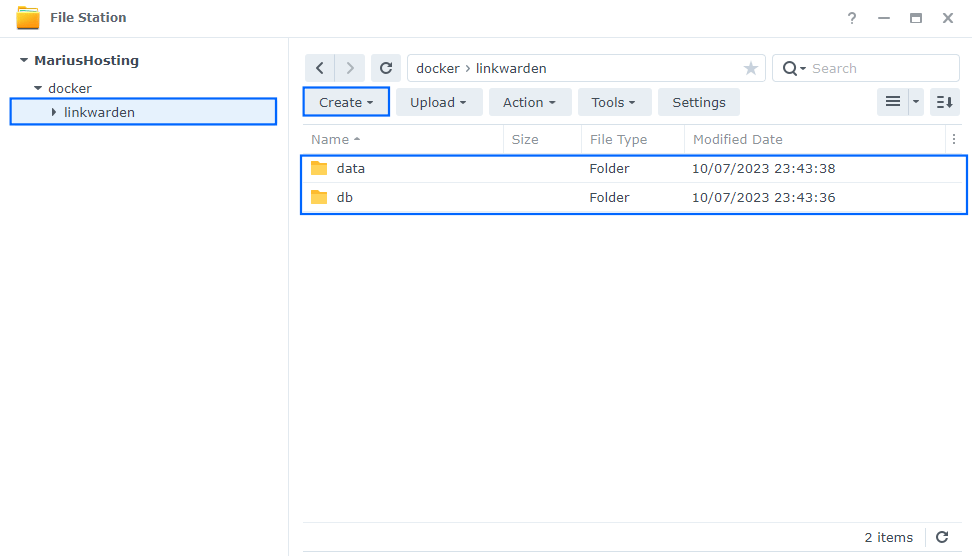
STEP 12
Log into Portainer using your username and password. On the left sidebar in Portainer, click on Home then Live connect. Follow the instructions in the image below.

On the left sidebar in Portainer, click on Stacks then + Add stack. Follow the instructions in the image below.

STEP 13
In the Name field type in linkwarden. Follow the instructions in the image below.
services:
db:
image: postgres:18
container_name: Linkwarden-DB
hostname: linkwarden-db
security_opt:
- no-new-privileges:true
healthcheck:
test: ["CMD", "pg_isready", "-q", "-d", "linkwarden", "-U", "linkwardenuser"]
timeout: 45s
interval: 10s
retries: 10
volumes:
- /volume1/docker/linkwarden/db:/var/lib/postgresql:rw
environment:
POSTGRES_DB: linkwarden
POSTGRES_USER: linkwardenuser
POSTGRES_PASSWORD: linkwardenpass
restart: on-failure:5
linkwarden:
image: ghcr.io/linkwarden/linkwarden:latest
container_name: Linkwarden
healthcheck:
test: timeout 10s bash -c ':> /dev/tcp/127.0.0.1/3000' || exit 1
interval: 10s
timeout: 5s
retries: 3
start_period: 90s
hostname: linkwarden
security_opt:
- no-new-privileges:true
ports:
- 7461:3000
volumes:
- /volume1/docker/linkwarden/data:/data/data:rw
environment:
DATABASE_URL: postgres://linkwardenuser:linkwardenpass@linkwarden-db:5432/linkwarden
NEXTAUTH_SECRET: q9TAW5pK5O9DqAWhY18XupmtlZk0ULRmjroiZcfvJkvZduSYzrzc0FtM2yfHEeyB
NEXTAUTH_URL: http://localhost:3000/api/v1/auth
# Additional Optional Settings
# PAGINATION_TAKE_COUNT:
# STORAGE_FOLDER:
# AUTOSCROLL_TIMEOUT:
NEXT_PUBLIC_DISABLE_REGISTRATION: false #or true
restart: on-failure:5
depends_on:
db:
condition: service_healthy
Note: Before you paste the code above in the Web editor area below, change the value for NEXTAUTH_SECRET. (Generate your own 64 length NEXTAUTH_SECRET.)
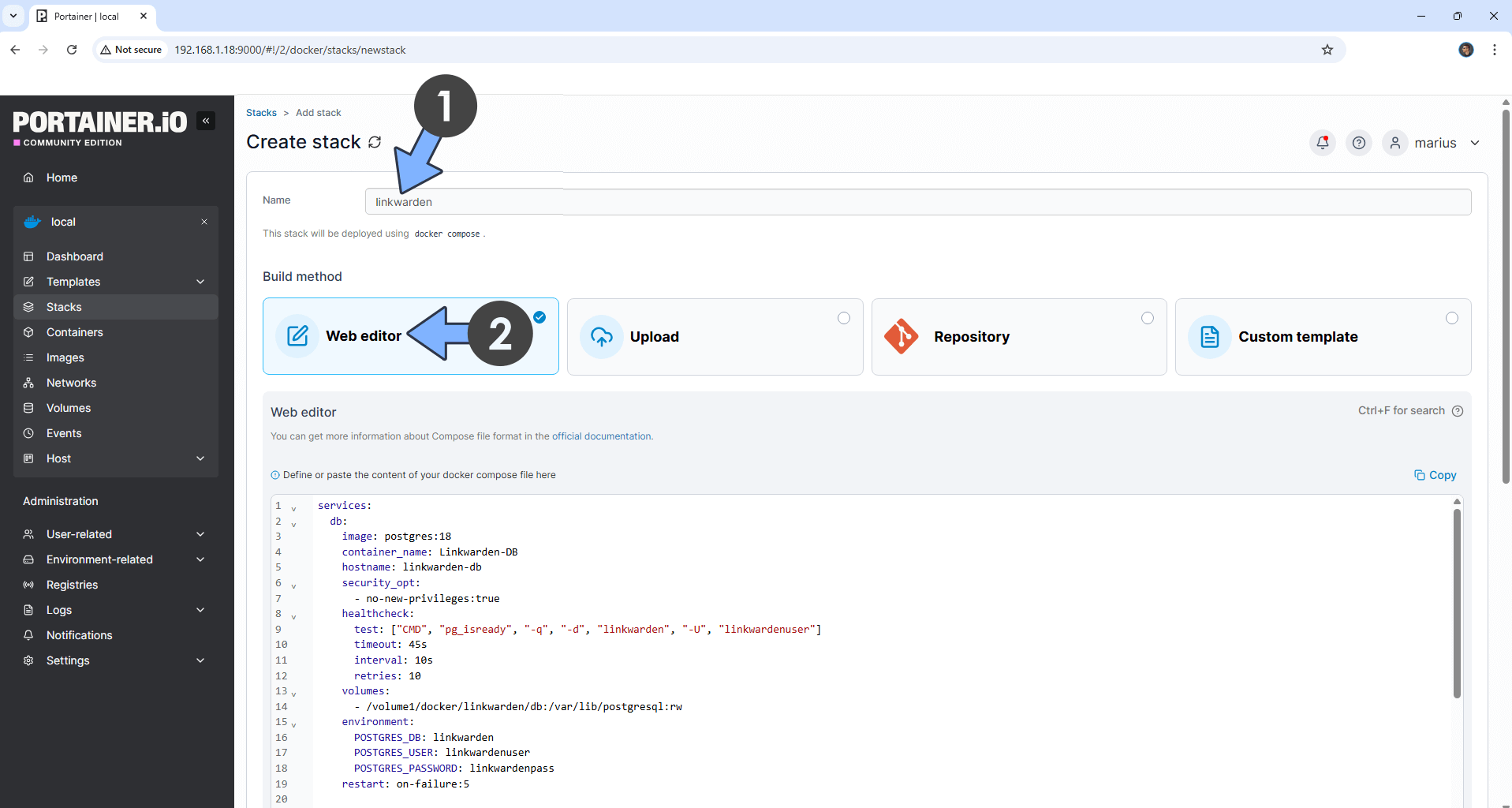
STEP 14
Scroll down on the page until you see a button named Deploy the stack. Click on it. Follow the instructions in the image below. The installation process can take up to a few minutes. It will depend on your Internet speed connection.
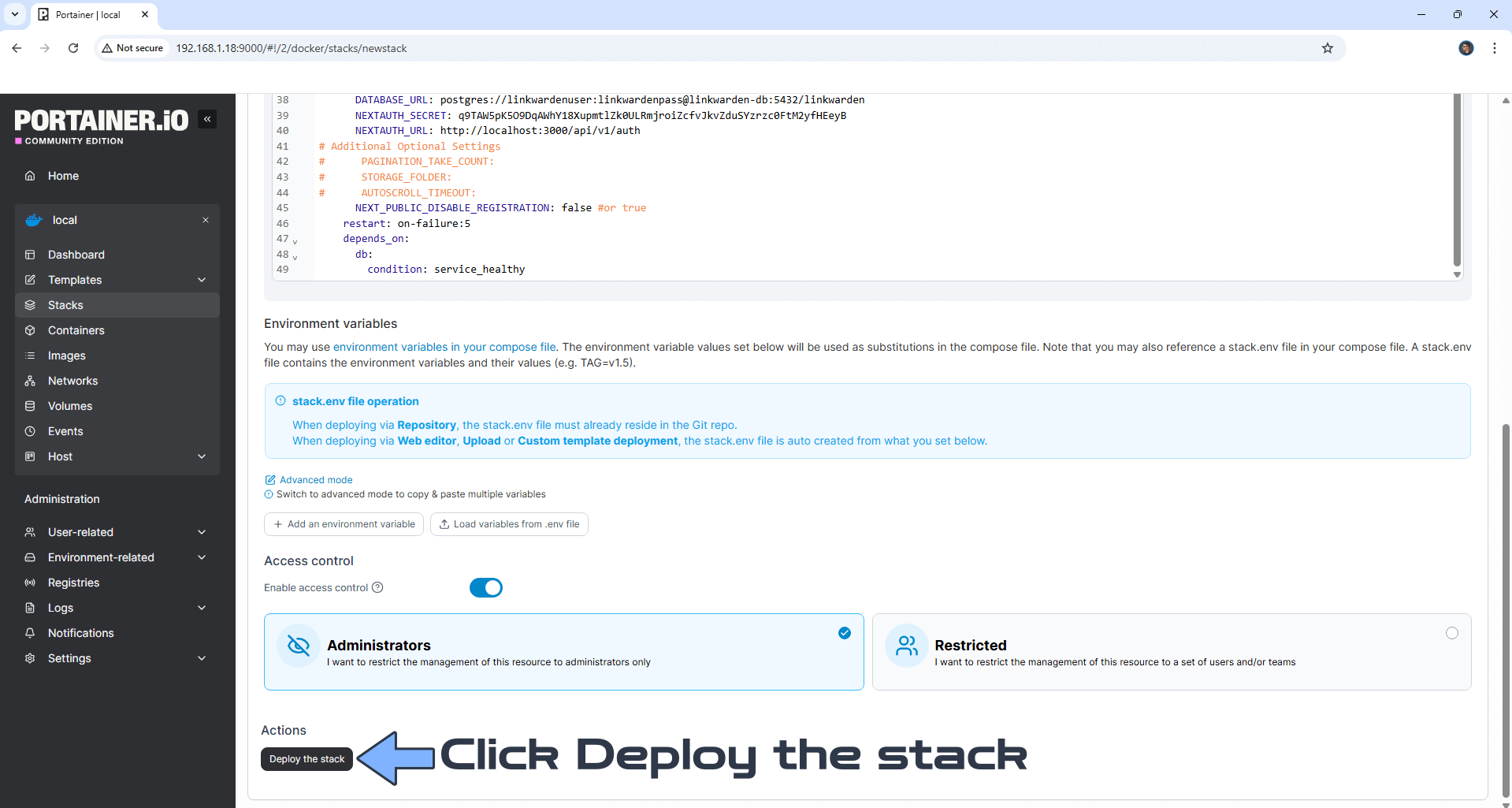
STEP 15
If everything goes right, you will see the following message at the top right of your screen: “Success Stack successfully deployed“.

STEP 16
🟢Please Support My work by Making a Donation. Almost 99,9% of the people that install something using my guides forget to support my work, or just ignore STEP 1. I’ve been very honest about this aspect of my work since the beginning: I don’t run any ADS, I don’t require subscriptions, paid or otherwise, I don’t collect IPs, emails, and I don’t have any referral links from Amazon or other merchants. I also don’t have any POP-UPs or COOKIES. I have repeatedly been told over the years how much I have contributed to the community. It’s something I love doing and have been honest about my passion since the beginning. But I also Need The Community to Support me Back to be able to continue doing this work.
STEP 17
Now open your browser and type in your HTTPS/SSL certificate like this https://linkwarden.yourname.synology.me In my case it’s https://linkwarden.mariushosting.synology.me If everything goes right, you will see the Linkwarden registration page. Click Sign up. Follow the instructions in the image below.
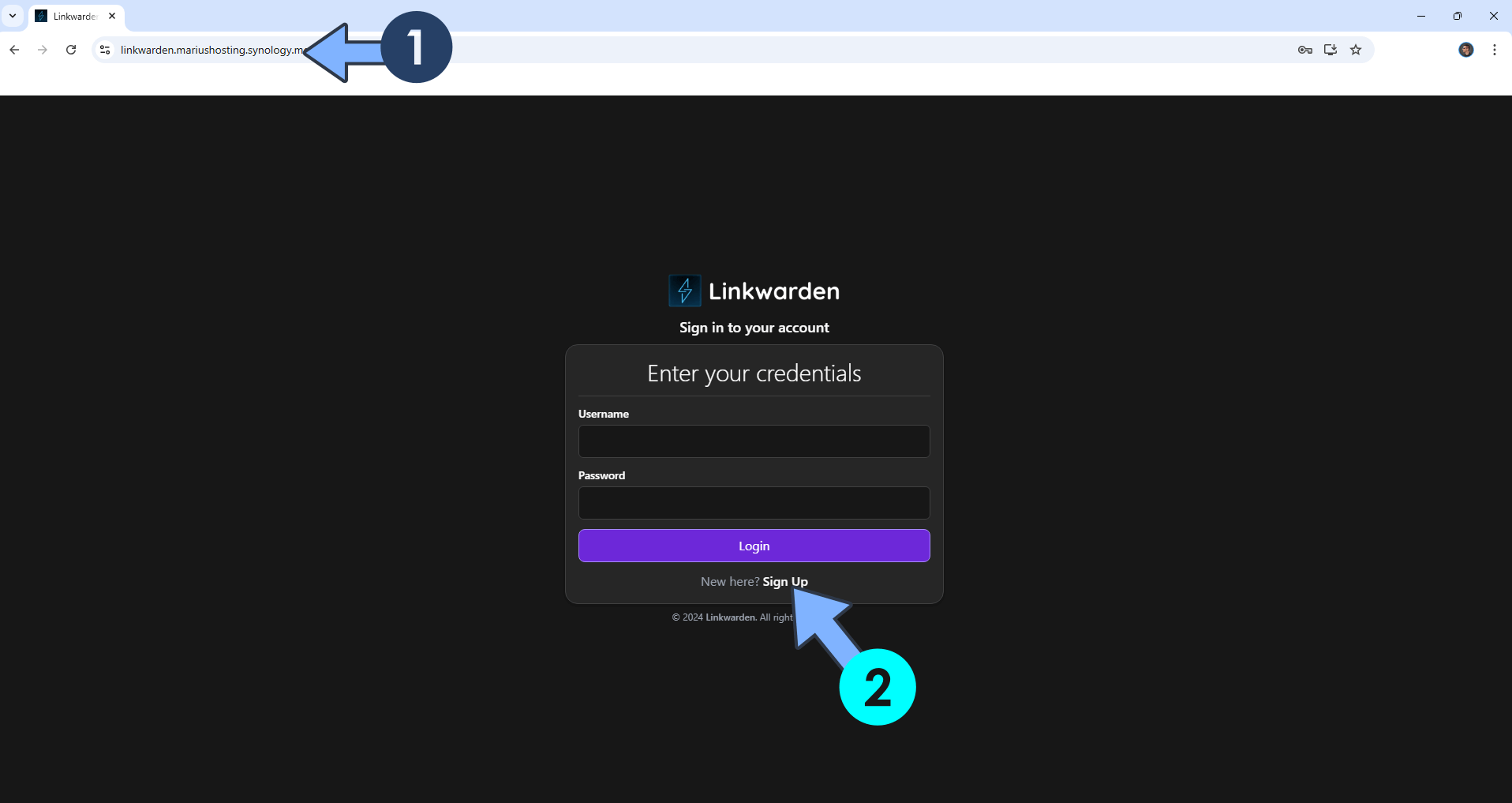
STEP 18
Type in your own Name, Username and Password. Confirm the password then click Sign Up. Follow the instructions in the image below.
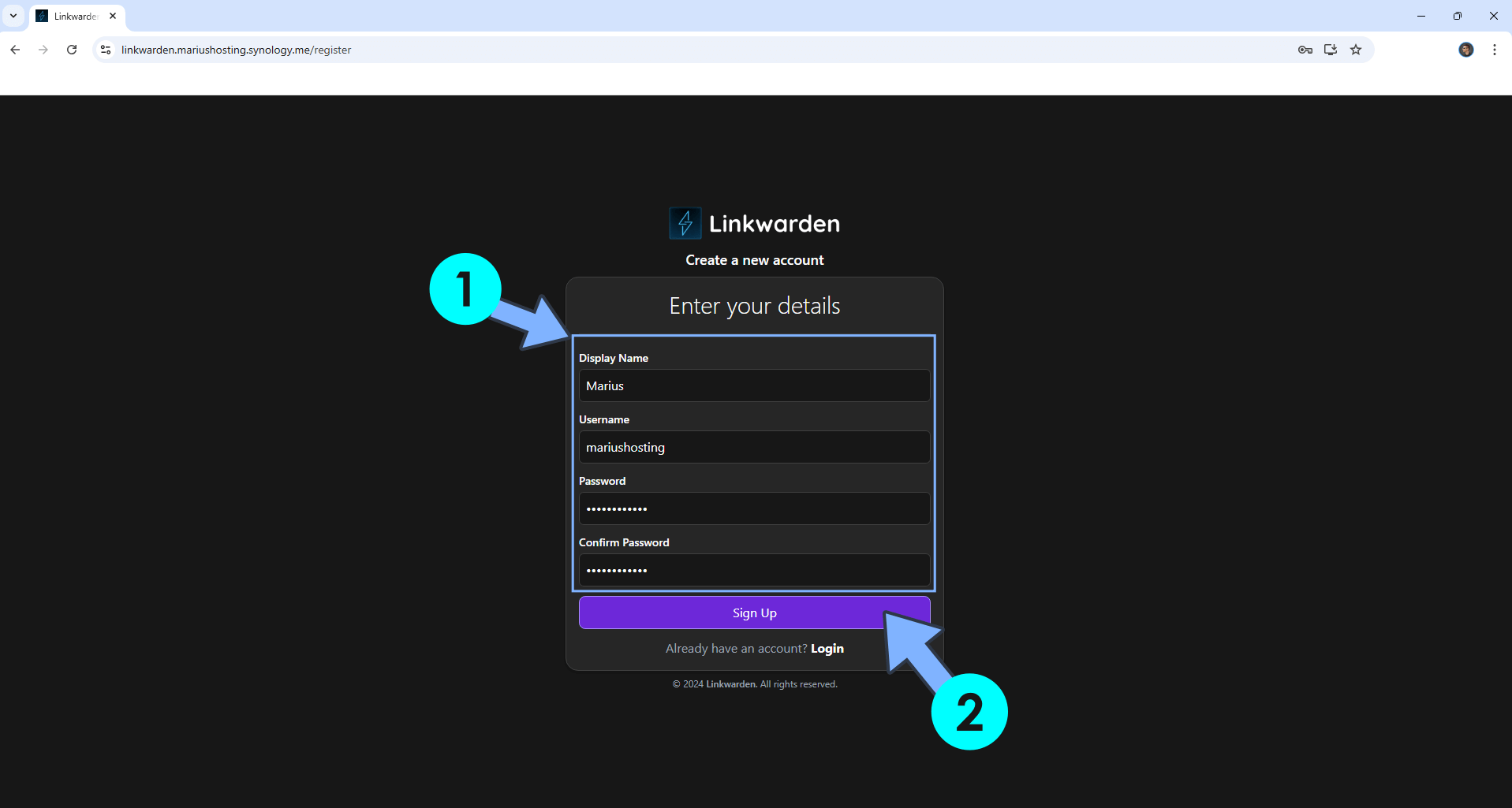
STEP 19
Type in your own Username and Password that you have previously created at STEP 18, then click Login. Follow the instructions in the image below.
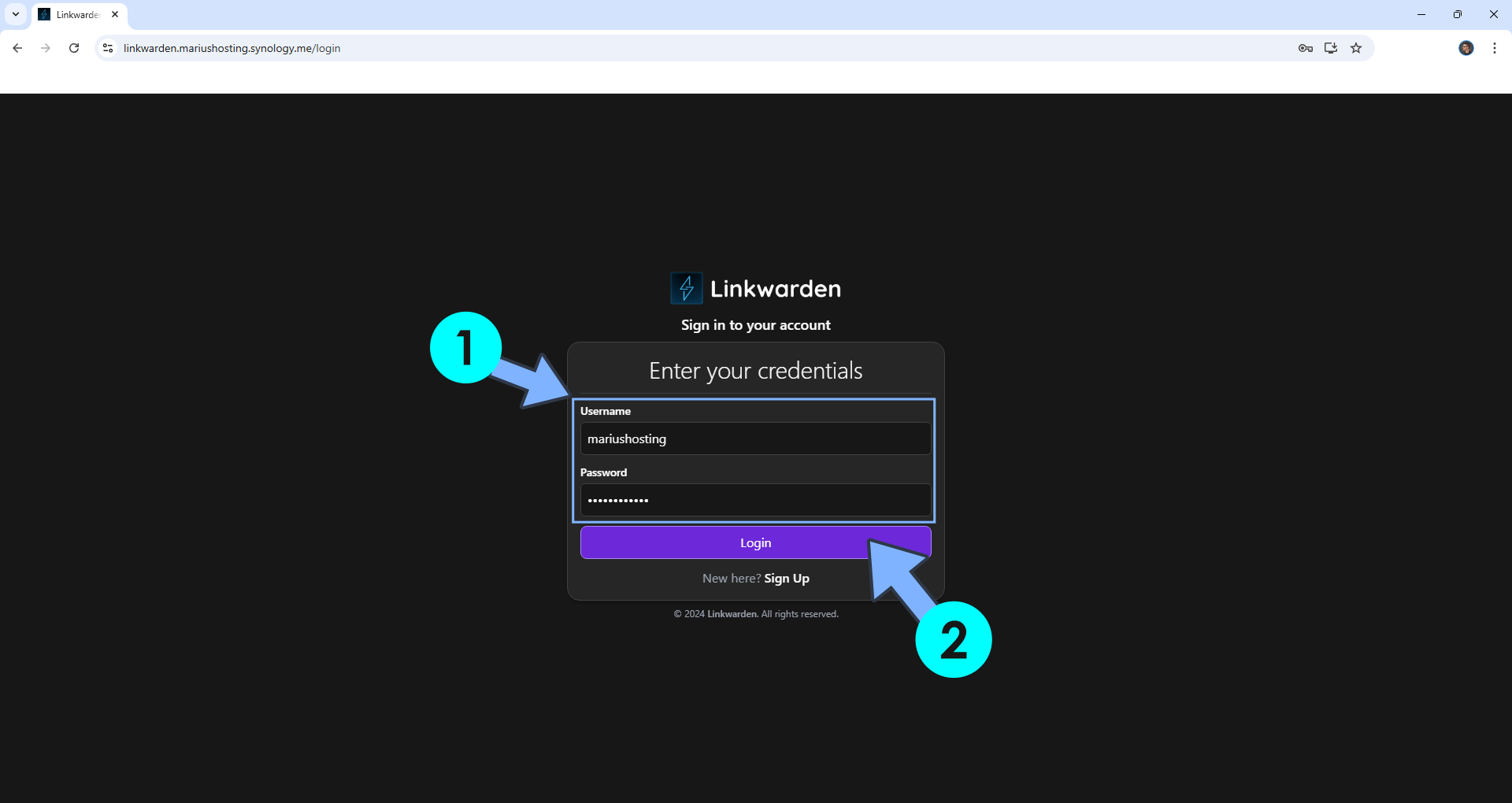
STEP 20
Your Linkwarden dashboard at a glance! Start organizing your webpages. At the top right of the page, click on the user icon, then Settings. Follow the instructions in the image below.
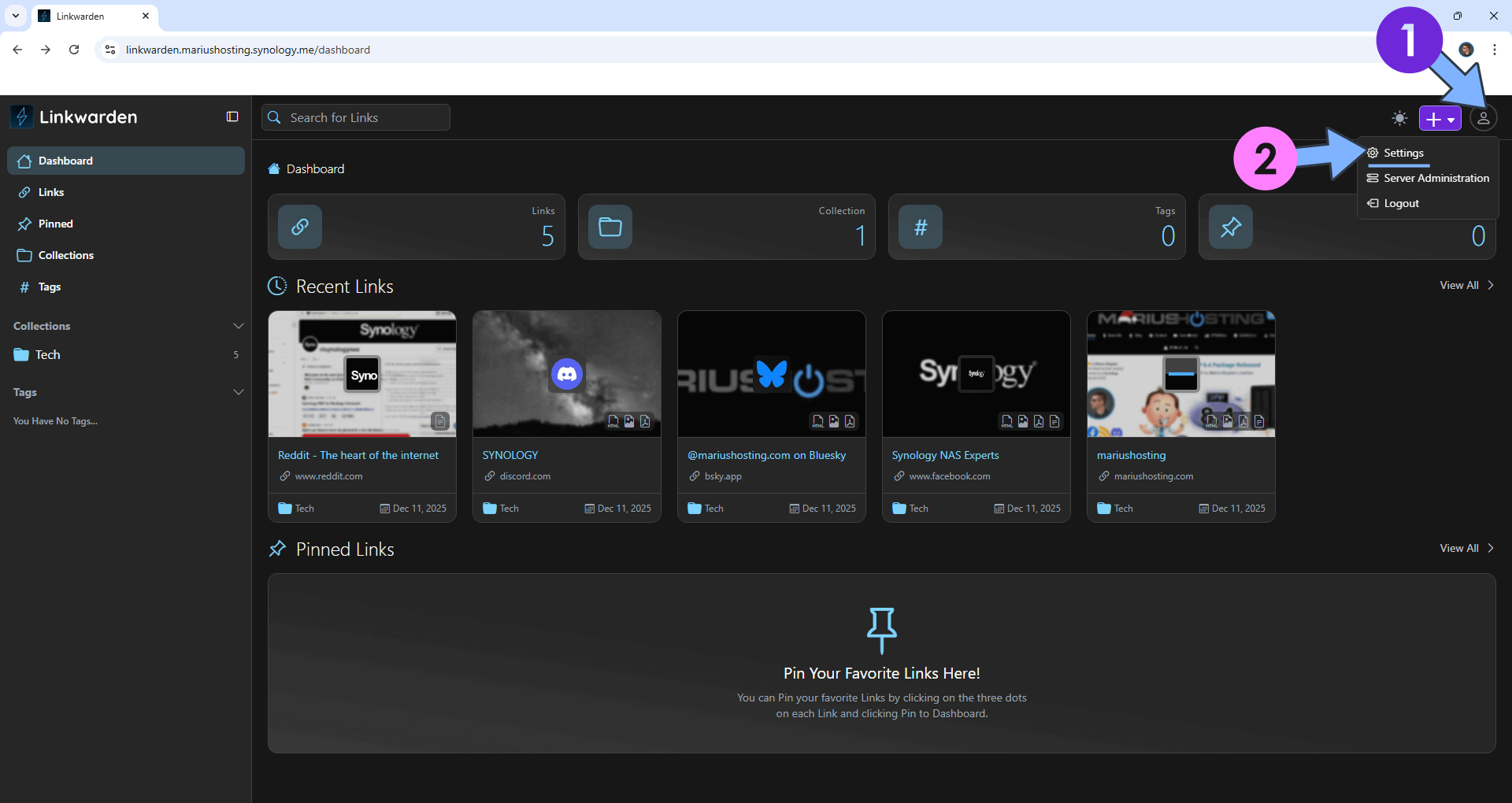
STEP 21
On the left sidebar, click Preference. Adjust your Settings, then click Save Changes. Follow the instructions in the image below.
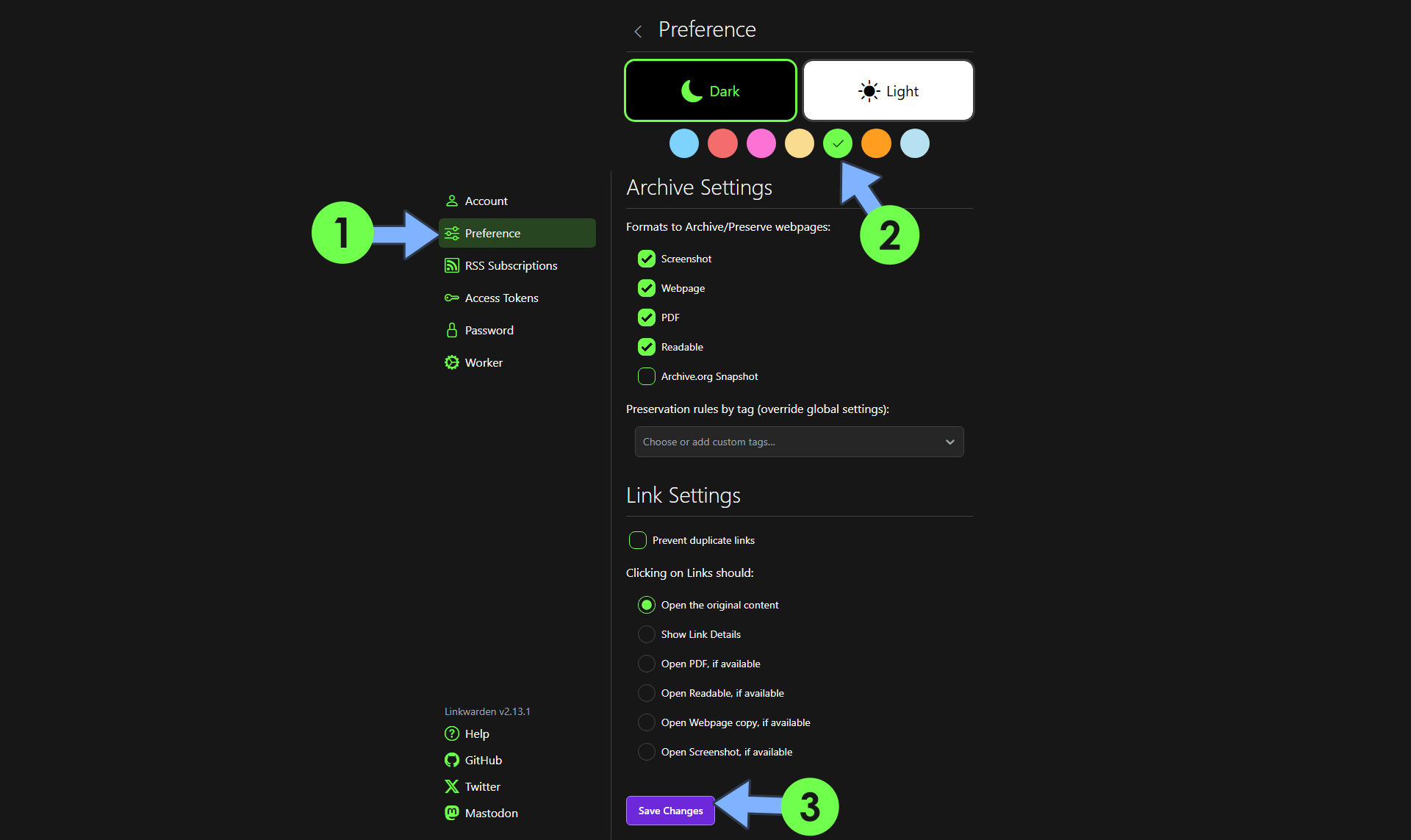
STEP 22
Your Linkwarden dashboard at a glance!
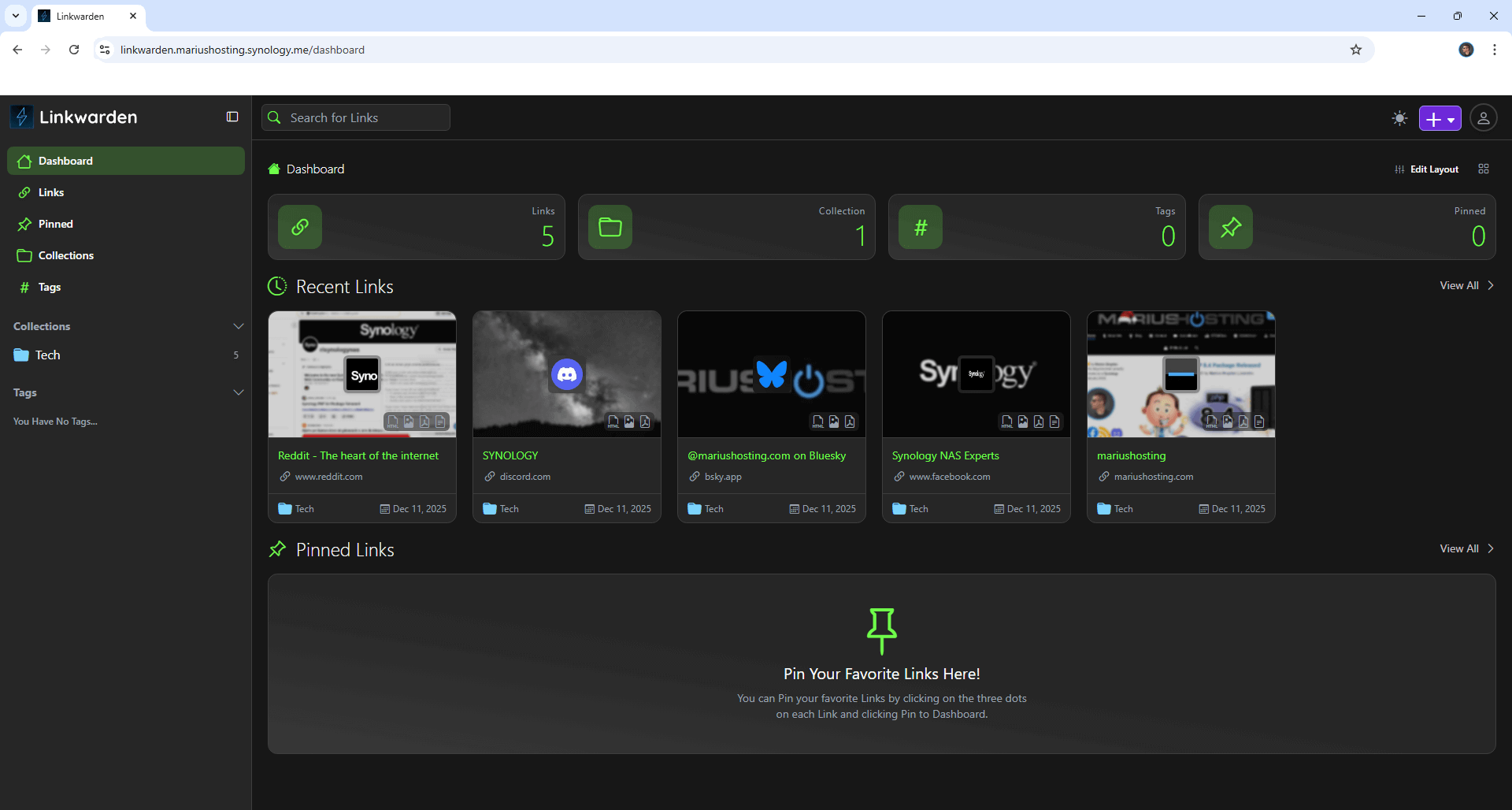
STEP 23
If you want to disable user registration in Linkwarden, just change the following line in the compose at STEP 13:
NEXT_PUBLIC_DISABLE_REGISTRATION: falsewith the following one:
NEXT_PUBLIC_DISABLE_REGISTRATION: trueClick update the stack to update the settings. From this point on, any user that will try to register a new account in Linkwarden will be rejected.
Enjoy Linkwarden!
If you encounter issues by using this container, make sure to check out the Common Docker issues article.
Note: Can I run Docker on my Synology NAS? See the supported models.
Note: How to Back Up Docker Containers on your Synology NAS.
Note: Find out how to update the Linkwarden container with the latest image.
Note: How to Free Disk Space on Your NAS if You Run Docker.
Note: How to Schedule Start & Stop For Docker Containers.
Note: How to Activate Email Notifications.
Note: How to Add Access Control Profile on Your NAS.
Note: How to Change Docker Containers Restart Policy.
Note: How to Use Docker Containers With VPN.
Note: Convert Docker Run Into Docker Compose.
Note: How to Clean Docker.
Note: How to Clean Docker Automatically.
Note: Best Practices When Using Docker and DDNS.
Note: Some Docker Containers Need WebSocket.
Note: Find out the Best NAS Models For Docker.
Note: Activate Gmail SMTP For Docker Container
This post was updated on Friday / December 12th, 2025 at 1:57 AM
